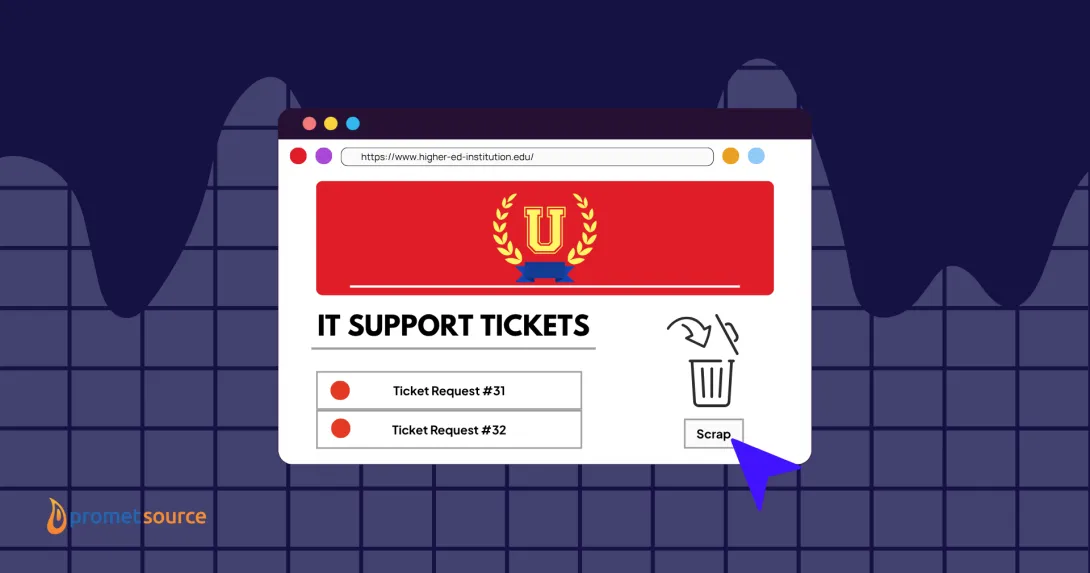Best Drupal Modules for Government Websites

Those of us who have a strong conviction that Drupal is the optimal CMS for government websites are in good company.
Secure, scalable, accessible out of the box, inherently cost effective, easily integrated with other systems, and fueled by a million member plus Drupal community—the number of government entities around the world that are relying on the Drupal CMS is on a solid upward trajectory.
Key among the factors driving Drupal’s role in the world’s accelerated advance toward digital government: the Drupal ecosystem’s 40,000 plus core and contributed modules.
With so much from which to choose, sorting through the possibilities and moving forward with confidence that the best options are being deployed can be a challenge.
Here at Promet Source, the multiple government clients for whom we’ve had the privilege recently of developing, designing and migrating Drupal sites, has resulted in a depth and breadth of insight on the topic and expertise that we can share.
Here’s an overview of a few of our favorites and thoughts on must-have Drupal modules for government websites.
Management of Complex Permissions Levels
Workflows and Drupal Group
Drupal 8 comes out of the box with a workflow management capability that can accommodate a basic level of permissions and processes associated with creating and ushering content from draft to published states.
Government clients, however, tend to require complex content publishing workflows concerning creation, editing, publishing, revising, and updating of content within designated pages and sections of the site.
The Drupal Workflow module stands up to the complex workflow requirements of government clients, allowing for a high degree of customization and the association of specified workflow states with entities.
The Drupal Group module also add important functionality to the permissioning process. The module allows for the grouping of group collections of content, and the assignment of roles and permissions for those groups specifically
Spam Mitigation
Honeypot
Digital government requires the ability to conduct business online, which often requires the completion and submission of online forms, free from the interference of spam bots, whose impact runs the spectrum from a time-consuming annoyance to a disabling of all or part of the site’s functionality.
Our favorite Drupal module for stopping spam is the contributed Honeypot module is designed to deter spam bots from completing forms on a Drupal site, by adding an invisible field, as well as a time stamp to every form. Humans can’t see the invisible field and won’t fill it out.
If the invisible field is filled out by a bot, the form returns an error. The time stamp feature enables detection of bots an based unreasonably quick completion of a form. With Honeypot a designated amount of time is required before the form can be effectively submitted.
Secure, Single Sign On
SimpleSAMLphp Authentication
Government clients need to be able to count on sign on capabilities that are both robust and easy to manage. The Drupal SimpleSAMLphp Authentication module serves both purposes, integrating Drupal with SimpleSAMLphp, which serves to authenticate users with a single sign on. The module is fully configurable, allowing for the assigning of highly specific internal permission levels.
Easy Access to Related Content
Entity Reference Module
The Drupal Entity Reference module enables a critical functionality, which Promet heavily leverages on every government website that we build. Utilizing the Entity Reference field, the module can significantly enhance user experience by alerting them to related content, which could be a node, a user, or a taxonomy term.
Multilingual Capabilities
Drupal Translation Modules
Even on the local level, government websites are widely expected to serve a wide range of constituencies who might speak different languages. Starting with Drupal 8, Drupal became multilingual out of the box, supported by a robust selection of translation modules.
- The Content Translation module allows for the translation of content, comments, custom blocks, taxonomy terms, users and other content entities in order to create a duplicate web page in the designated language.
- Entity Translation allows translation of particular web page elements. Instead of translating complete nodes, Entity Translation provides the option of making only designated fields translatable.
- Merge Translations provides the ability to merge nodes that are in different languages into one, translated node.
Enhanced Functionality for Images
Responsive Images, Drupal Focal Point, and Drupal Slick Carousel
The Responsive Images module is now included in Drupal core and is extremely easy to setup. Read How to Set Up Responsive Images in Drupal 9, for more on this topic.
The Drupal Focal Point module serves to streamline cropping and image optimization by automatically identifying the focal point of an image, and cropping around that area when using image styles. We often leverage Focal Point when setting up responsive images.
For slideshows, the Drupal Slick Carousel provides a depth and breadth of support and configuration options.
Page Building Tools
Multiple Layout Builder and Layout Builder
Multiple Layout Builder offshoot modules such as Layout Builder Modal and Layout Builder Restrictions enable public sector site builders to lock down regions that cannot be edited, while ensuring a more robust UI. See a recent post 6 Steps to Build a Rock Solid Banner Component in Drupal 10, for a guide to creating a block component using Layout Builder.
Layout Builder functionality is built into Provus® and is pivotal to the success of the platform.
Multifaceted Platform for Government Sites
Provus®
Cherry picking from among tens of thousands of Drupal modules in the process of building optimal web solution for our public sector clients has served us well.
Focused on greater efficiencies and leveraging best practices, we recently created Provus®, a distribution system consisting of dozens of modules, multiple themes, several content type, and taxonomy terms -- all of which are auto enabled at the time of the initial installation.
Provus® proved key in the efficient, seamless launch of the Orange County, Calif., website, which consists of 40 microsites. Key to the efficient development of the Orange County site was a component-based design system that offered a robust set of design options without needing to reinvent the wheel with the build of every new microsite. From the perspective of the current content editors of the site, Provus® has sparked a new level of empowerment with the ability to easily edit, update, and switch up layouts utilizing drag-and-drop functionality.
Among the modules leveraged within Provus®:
- Layout Builder allows content editors and site builders create visual layouts for displaying content and customize how content is arranged on a single page with an easy to use drag-and-drop interface.
- Fullcalendar View provides a calendar view format powered by the FullCalendar JavaScript library and features day, week, or month views; the ability to create a new event by double clicking; event colors based on taxonomy or content type; and recurring event functionality.
- Geolocation Views facilitates the creation of Views-based mapping solutions using a choice of map renderers.
- Focal Point is an image scaling and cropping tool that allows for the specification of what part of the image is most important, ensuring, for instance that a subject’s head or the most essential element of the image is not cropped out.
- Media Library is a media management module that provides an accessible and consolidated view of all of images that have been uploaded to a site. A robust and easy-to use interface allows for the searching, sorting and creation of media items, and can be used to add media items to an entity reference field, or embed media into content via a text editor.
- The Drupal Office Hours module defines a weekly office hours or hours of operation field type allowing for the specification of when facilities are opened or closed.
- Facets provides a system for sorting content on a search, enabling users to filter down to the specific content that they are looking for in an easy and accessible manner. This functionality is huge for government sites which require robust search capabilities. The Facet module allows site builders to easily create and manage faceted search interfaces.
- DraggableViews can be used to organize simple lists and complex structures via drag-and-drop functionality. Access to style plug-in settings serves to simplify configuration.
- Search API is a module that we leverage with a high degree of frequency in conjunction with Views and Facets. This module provides a framework for easily creating searches on any entity known to Drupal, using any kind of search engine.
- Taxonomy is a powerful core module that facilitates the connection and classification of a website’s content, gathering terms within "vocabularies."
Designing and Developing Drupal sites for government clients that leverage Promet’s collective brainpower, plus the all the best that the Drupal community has to offer is what we do. What can we do for you? Let’s talk.
Other Insights & Resources you may like
Get our newsletter
Get weekly Drupal and AI technology advancement news, pro tips, ideas, insights, and more.





